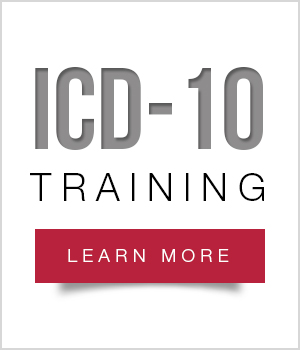ICD-9 vs ICD-10
There are several structural differences between ICD-9-CM codes and ICD-10-CM codes.
Table 1 illustrates the difference between ICD-9-CM, (Volumes 1 and 2) and ICD-10-CM. Table 2 illustrates the difference between ICD-9-CM, (Volume 3) and ICD-10-PCS.
Table 1: Diagnosis Code Comparison
| Characteristic | ICD-9-CM (VOLS. 1 & 2) | ICD-10-CM |
|---|---|---|
| Field Length | 3-5 Characters | 3-7 Characters |
| Available Codes | Approximately 14,000 codes | Approximately 69,000 codes |
| Code Composition (numeric or alpha) | Digit 1 = alpha or numeric Digits 2-5 = numeric |
Digit 1 = alpha Digit 2 = numeric Digits 3-7 = alpha or numeric |
| Available Space for New Codes | Limited | Flexible |
| Overall Detail Embedded Within Codes | Limited detail in many conditions | Generally more specific (Allows descriptions of comorbidities, manifestations, etiology/causation, complications, detailed anatomical location, sequelae (after effects of a disease, condition, or injury such as scar formation after a burn), degree of functional impairment, biologic and chemical agents, phase/stage, lymph node involvement, lateralization and localization, procedure or implant related, age related, or joint involvement) |
| Laterality | Does not identify right versus left | Often identifies right versus left |
| Sample Code | 81315, Open fracture of head of radius | S52122C, Displaced fracture of head of left radius, initial encounter for open fracture type IIIA, IIIB, or IIIC |
Industry Insights
For Healthcare at home
Get the latest news and business insights affecting home health, hospice and home care providers.
Subscribe Today


